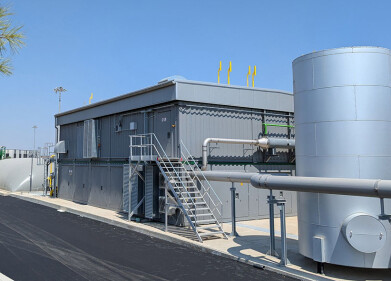Air clean up
What Are Clean Air Routes?
Mar 22 2021
London’s Cross River Partnership (CRP) has announced the launched of 14 Clean Air Routes across the city. The scheme aims to offer commuters and residents the chance to escape the honking horns and foul fumes of pollution hotspots, instead taking detours through alternative pedestrian and cycling routes in order to reach their destination without endangering their health.
The initiative is part of a wider drive by the Department for Environment, Food and Rural Affairs (DEFRA), who have instituted a Clean Air Villages (CAV) programme that attempts to improve air quality and reduce transport-related pollution in local boroughs. The Clean Air Routes scheme will cover 11 of those boroughs, potentially offering hundreds of thousands of citizens an opportunity to seek out healthier airways.
Building upon past successes
The Clean Air Routes idea was originally conceived of in 2017, when the CRP and local authorities struck upon an alternative route from King’s Cross station and Euston Station. After using sensitive air quality monitoring equipment – including advanced particulate matter sensing technology – it was determined that the new route cut down exposure to pollution by nearly one quarter.
Since then, the idea has taken off, with a total of 16 routes now available today. That’s largely thanks to the recent influx of new routes announced earlier this month, when 14 new journeys were added to the CRP’s Clean Air Route Finder. That interactive journey planning platform was developed in conjunction with Imperial College London and King’s College London and is freely accessible by all web users.
Protecting the vulnerable
One of the newly added routes offers a pathway between Tooting Broadway Station and St George’s Hospital. Since that journey is often made by patients of the hospital (not to mention the family members and friends who visit them and the staff who work there), it was deemed a priority to devise a route which would not be so exposed to harmful contaminants like nitrogen dioxide (NO2).
Analysis of the new route reveals that it is hugely successful is reducing exposure to contamination, with those opting to walk or cycle it inhaling around 40% fewer harmful particles of NO2 than those who took the most direct route. As such, it’s a huge help for people whose lungs and immune systems may already be under pressure from illness or disease.
Secondary benefits
As well as allowing people the chance to avoid the most polluted parts of the UK’s biggest city, the Clean Air Routes initiative has another strong benefit: reconnection with nature. On average, the 14 new routes which have been added to the CRP’s Clean Air Route Finder offer walkers and cyclists 28% greater exposure to greenery and nature, while noise pollution levels are also considerably lower.
What’s more, because the routes are relatively new and unknown among London’s populace, there’s a good chance they are likely to be less congested than other neighbourhoods. That’s good news for novice cyclists who may feel nervous about cycling on the city’s major thoroughfares and would prefer a quieter and less stressful commute to hone their skills.
Events
Mar 18 2025 Expo Santa Fe, Mexico
Mar 18 2025 Moscow, Russia
Mar 19 2025 Manila, Philippines
Mar 20 2025 Guangzhou, China
Mar 24 2025 National Harbour, MD, USA














